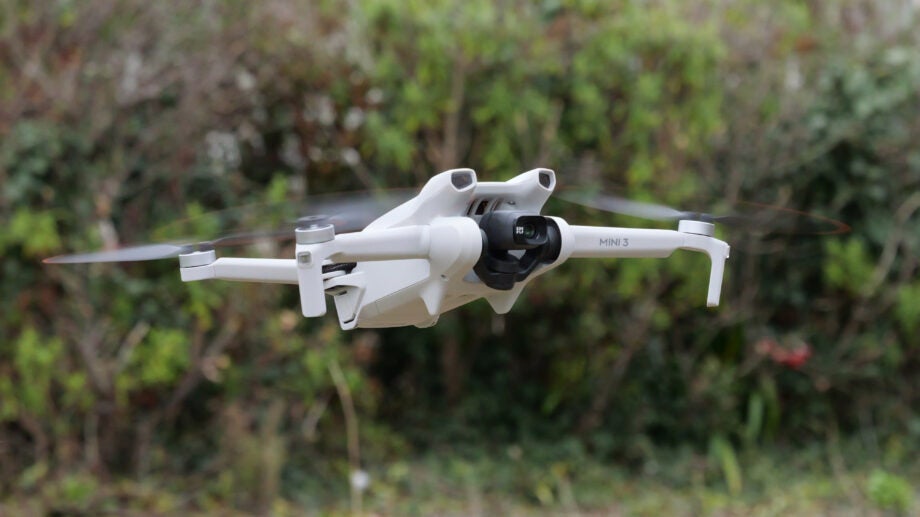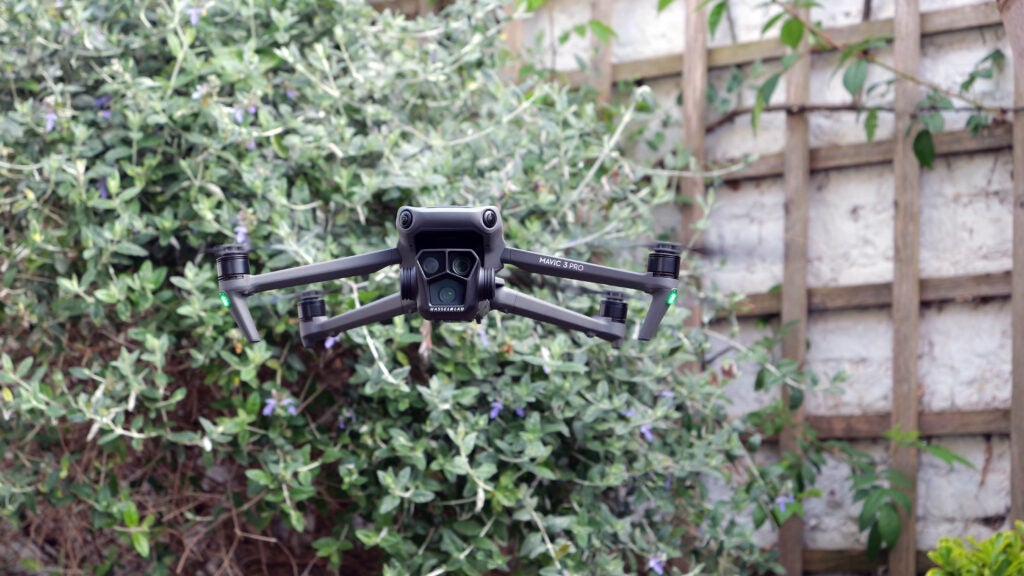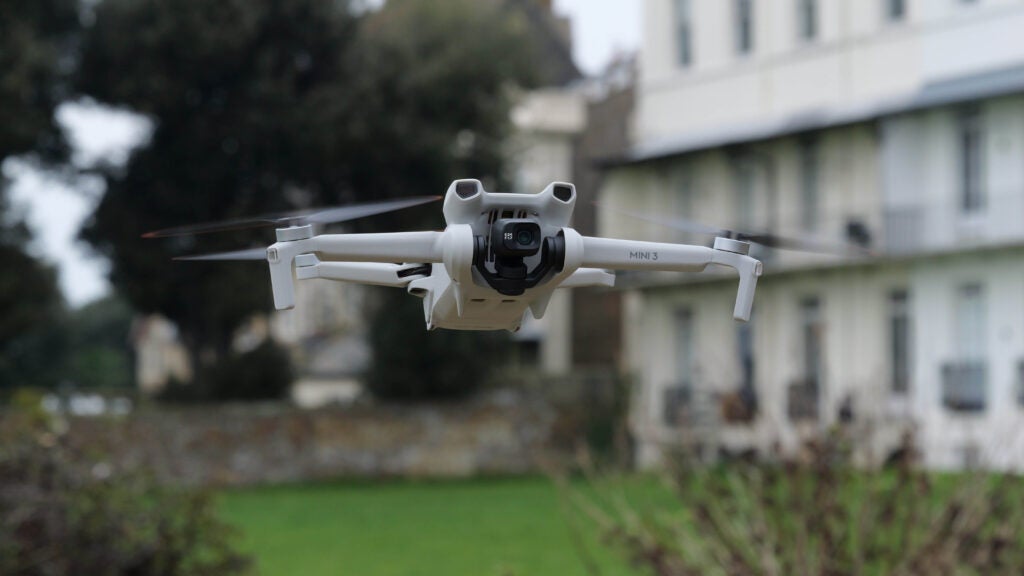UK Drone Laws Explained: Where can and can’t I fly my drone in 2023?

Drones are hugely popular in 2023, with the portable flying machines able to provide amazing views and vistas perfect for sharing on social media. However, if you’re in the UK, you can’t simply take to the skies and fly wherever you like.
Our guide covers the legality of drones, the licenses you’ll need to stay on the right side of the law, where you can and can’t fly a drone in the UK as well as expected changes coming into law over the next few years.
If you’re looking to pick up a shiny new flying bot, be sure to check out our roundup of the best drones and if you’re planning to use a drone for commercial work rather than leisure, check out the CAA’s guide.

Black Friday-level iPhone 14 deal
Now you’re chance to get the iPhone 14 with 100GB of data for just £36.99 a month and absolutely nothing to pay upfront.
- Mobiles.co.uk
- No upfront cost
- Only £36.99/month
Are drones legal in the UK?
Yes, drones are legal and readily available to buy and use in the UK – though there are restrictions that can limit where and how you fly them depending on factors like weight and whether or not they’ve got a camera on board.
However, legislation around drone use in the UK is an ever-evolving beast and we’d recommend heading over to the CAA’s dedicated drone microsite to make sure you’re up to date on the latest rules and regulations. You don’t want a fine or to get your lovely new drone confiscated, do you?
Do I need a licence to fly drones in the UK?
The simple answer is yes – but not just one. If you own and operate your own drone and you’re over the age of 18, you’ll need both a Flyer ID and an Operator ID. These can both be obtained from the CAA after taking a short questionnaire to prove that you know and understand the rules of UK drone use.
A Flyer ID is required by anyone operating a drone in UK skies, and you must have proof of your ID whenever you take flight. It’s completely free to take the online exam, and you don’t have to pay for the ID either.
An Operator ID, on the other hand, is required for the person that owns the drone, with the aim of making sure that the kit is safe and ready to fly. You’ll also need to affix your Operator ID to the bottom of your drone for identification purposes, and you’ll have to pay £10.33 for the pleasure.
The Flyer ID lasts for five years, at which point you’ll have to re-apply and take the test to freshen your memory and make you aware of any new rules and regulations. The Operator ID, on the other hand, needs to be done once every year (at a further cost of £10.33 per year) and can be used across multiple drones.
There is a catch to all this however; if your drone is less than 250g and doesn’t feature a camera, you can operate and fly it without any kind of license. If, however, it has a camera, you’ll need a Flyer ID, and if it’s over 250g, you’ll need both a Flyer ID and an Operator ID.

Where can and can’t I fly my drone in the UK?
Seen some snazzy airborne footage on YouTube? Well, it might have been captured illegally depending on the weight of the drone used.
According to UK laws regulated by the Civil Aviation Authority, consumer drones (classed as those that weigh under 20kg but higher than 250g) must be flown no higher than 400 feet (120 metres), and be kept at least 50 metres away from people and private property, and 150 metres from congested areas and organised open-air assemblies of more than 1,000 people.
There is some wiggle room if you have a sub-250g drone however; while you still have to get your Flyer ID before taking to the skies, such lightweight drones can fly within 50 meters away of people and don’t have the same restrictions on staying away from buildings either.
It’s the main reason why so many drones are keen to hit that sub-250g mark, including recent options from DJI including the Avata and Mini 3.
You’re still required to keep the public safe from your drone – as such, you shouldn’t go too close nor fly over crowded areas – but you’ve got much more freedom to explore the skies than with heavier (over 250g) drones. The upper height limit of 150 meters still applies, however.
Regardless of size, you’re also required to keep your drone in your line of sight at all times, at a maximum of 500m away, and be aware of designated “no-fly zones”, which most notably include airports and prisons.
In addition, you need to register with the CAA if you’re planning to use your drone for “commercial purposes”. However, the definition of “commercial operations” is a little convoluted.
For instance, this doesn’t apply to you if you use a drone to shoot a video that you’ll monetise on YouTube if the content “was not commissioned by another party but was conceived and wholly funded by the poster”.
If, however, the content was “directly commissioned by another party for the purposes of display or marketing on their website”, you do need to register.
You can read up on the rules here, and there’s a handy community-run website on no-fly zones in the UK for drone operators too.

What rules can we expect for UK drone use in future?
As mentioned above, UK drone laws have been subject to regular changes, and plenty more tweaks could be made in the near future.
It was only in 2018 that the government made it illegal to fly a drone above 400ft or within 1km of airport boundaries. While the former remains in place, the latter was quickly deemed to be insufficient.
Anyone who flouts that 400ft rule could be charged with “recklessly or negligently acting in a manner likely to endanger an aircraft or any person in an aircraft”, and face a fine of up to £2500 or up to five years in prison.
There has also been the recent introduction of Flyer and Operator IDs, with new rules depending on the overall weight of the drone.
So what steps might the government take next?
It’s possible that drone users will one day be required to use a FINS − which would likely take the form of an app − to notify authorities and other drone users that they’re going to fly a UAV at a particular location at a given time ahead of time. Users may also have to pay for FINS access.
“The aim of this proposed policy is to increase drone user accountability, to ensure a flight can be made safely, without compromising the security or privacy of others. The real-time data and records made by a FINS could also be useful for enforcement,” last year’s public consultation explained.
The DfT says that drone operators will also eventually have to use apps that ensure they always have access to safety guidelines, though it isn’t yet clear how it plans to enforce this rule.
Additional reporting by Aatif Sulleyman.


